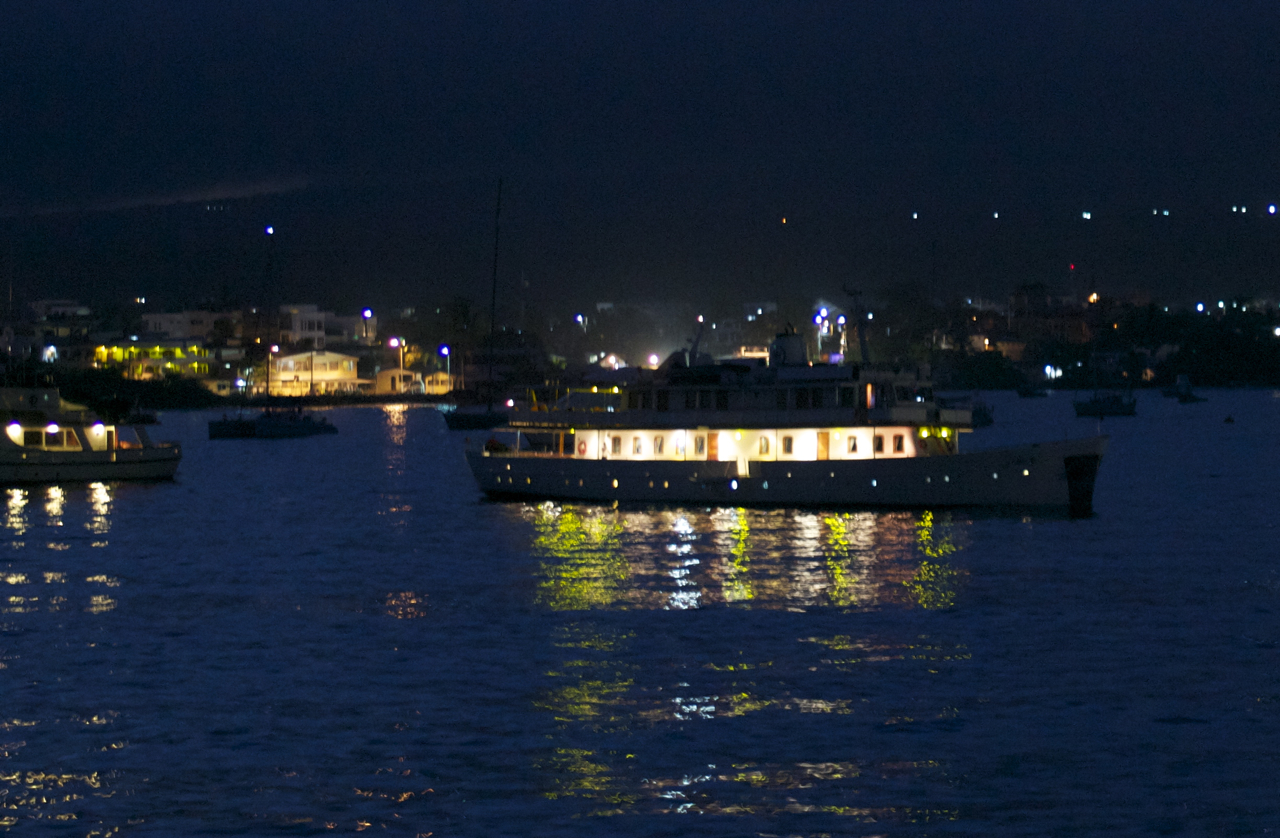Galápagos Monday: The People Problem
 This is the last installment of my six-week series about the Galápagos Islands. To recap the first five posts: The Galápagos is an archipelago of 14 volcanic islands that scientists since Darwin have gone well out of their way to study. The islands are extremely inhospitable to life, and yet, over long periods of time, life has found a way. Humans are capable of disturbing that ecosystem, but equally capable of restoring it. It’s this last point, the People Problem, that most interests me.Since around 1980, the number of tourists on the Galápagos has shot up. With tourism came economic growth, which meant increases in the resident population (on the five islands that are allowed to have residents, that is). See here:
This is the last installment of my six-week series about the Galápagos Islands. To recap the first five posts: The Galápagos is an archipelago of 14 volcanic islands that scientists since Darwin have gone well out of their way to study. The islands are extremely inhospitable to life, and yet, over long periods of time, life has found a way. Humans are capable of disturbing that ecosystem, but equally capable of restoring it. It’s this last point, the People Problem, that most interests me.Since around 1980, the number of tourists on the Galápagos has shot up. With tourism came economic growth, which meant increases in the resident population (on the five islands that are allowed to have residents, that is). See here: According to the 2006 census, only about one-fifth of the workforce on the Galápagos was born there. The rest migrated from mainland Equador in search of stable jobs. (Ecuador is not in great economic shape, to say the least.) Those jobs exist because of tourists: Two-thirds of the jobs on the islands are in the service sector. The tourists come, of course, because of the amazing plants and animals. They contribute money directly to conservation efforts, and their patronage boots the economy and allows the government to set up its own conservation management systems. That’s all great, except — more people also means more: ships, construction, roads, vehicles, hotels, restaurants, water and energy use, garbage, and sewage. All of that threatens the habitats and health of the plants and animals.In other words, the whole thing is unsustainable. The growing economy in the Galápagos is simultaneously supporting more science and conservation efforts and destroying the things that need to be studied and conserved. The economy is eating itself.Read more at...The Last Word on Nothing, July 2012.
According to the 2006 census, only about one-fifth of the workforce on the Galápagos was born there. The rest migrated from mainland Equador in search of stable jobs. (Ecuador is not in great economic shape, to say the least.) Those jobs exist because of tourists: Two-thirds of the jobs on the islands are in the service sector. The tourists come, of course, because of the amazing plants and animals. They contribute money directly to conservation efforts, and their patronage boots the economy and allows the government to set up its own conservation management systems. That’s all great, except — more people also means more: ships, construction, roads, vehicles, hotels, restaurants, water and energy use, garbage, and sewage. All of that threatens the habitats and health of the plants and animals.In other words, the whole thing is unsustainable. The growing economy in the Galápagos is simultaneously supporting more science and conservation efforts and destroying the things that need to be studied and conserved. The economy is eating itself.Read more at...The Last Word on Nothing, July 2012.